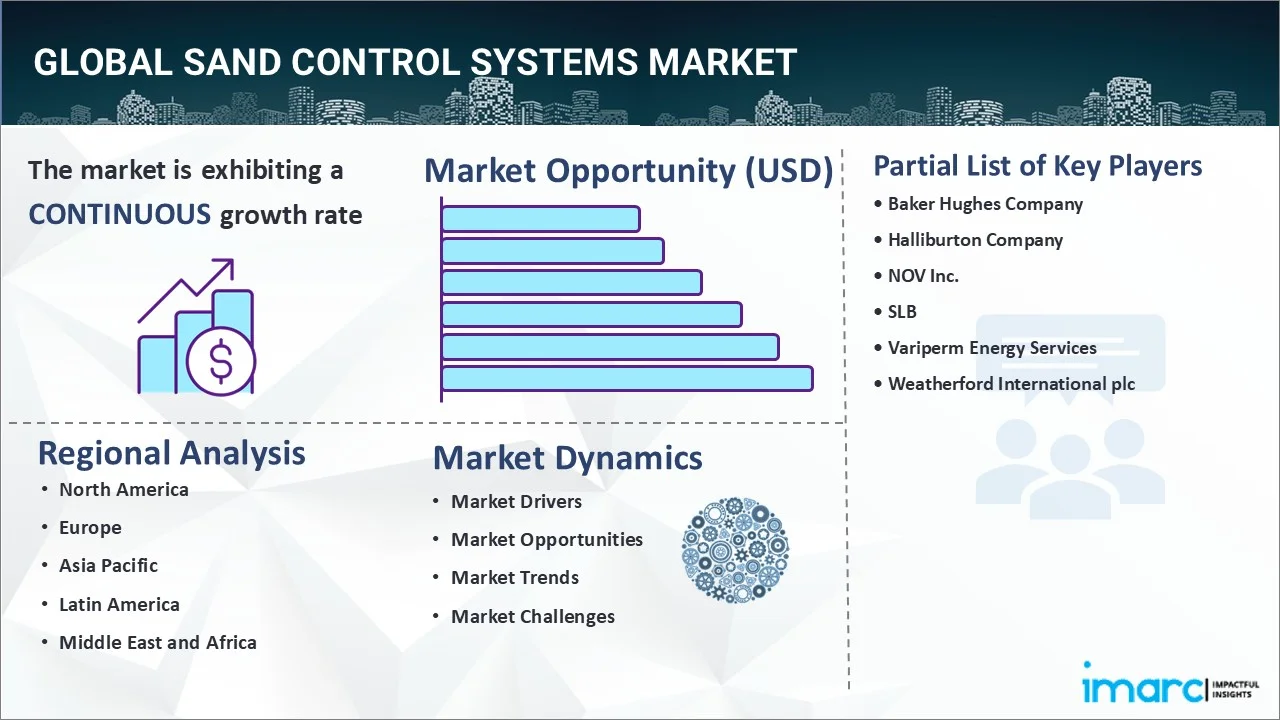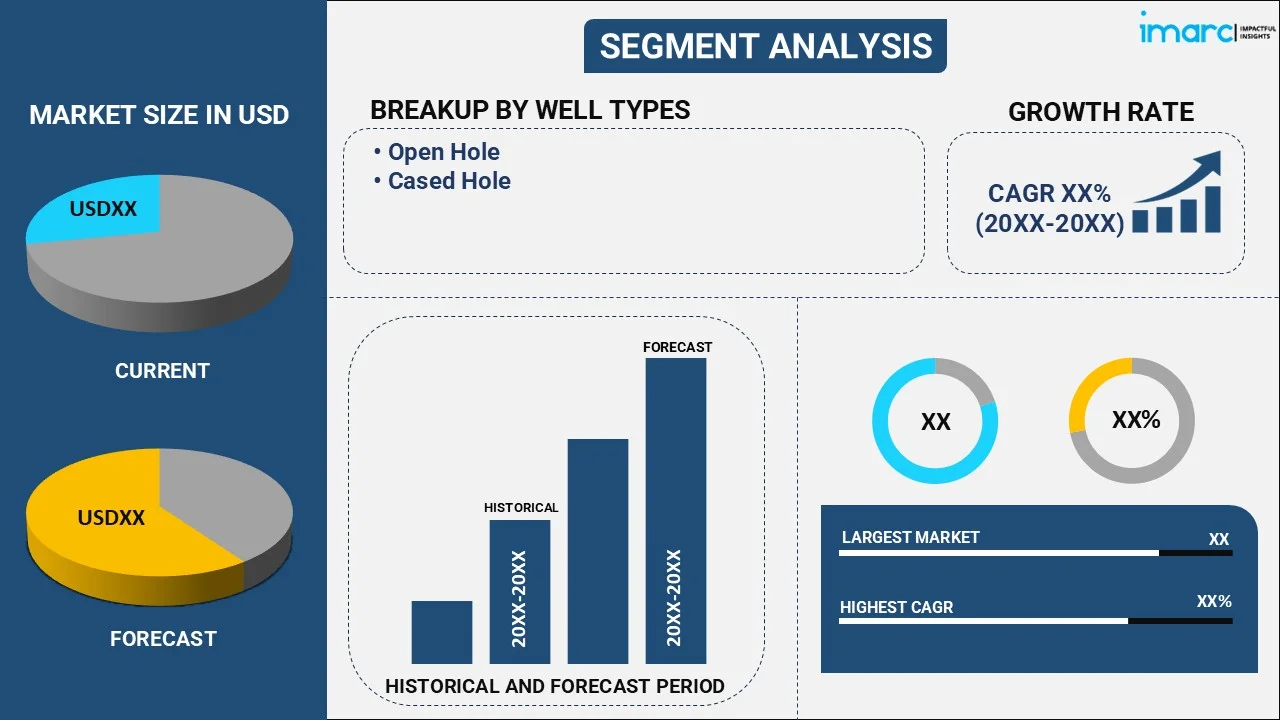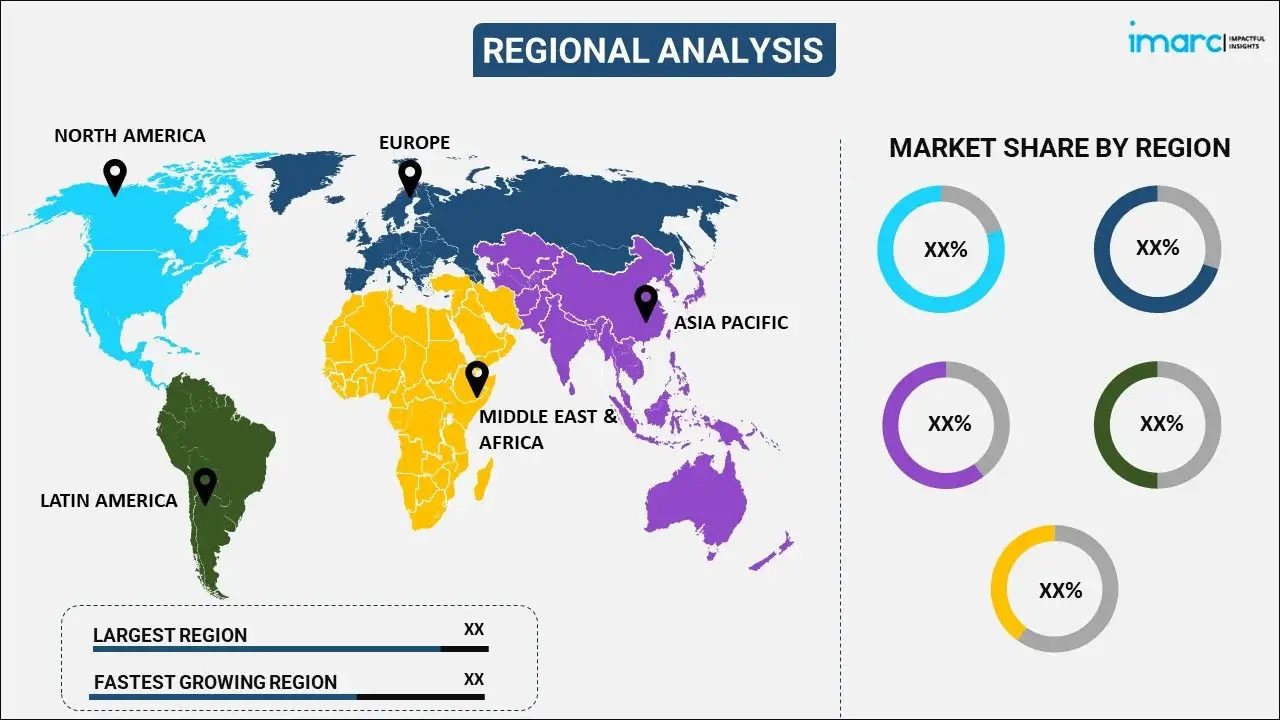
Sand Control Systems Market Report by Well Type (Open Hole, Cased Hole), Sand Control Method (Passive Sand Control, Active Sand Control), Application (Onshore, Offshore), and Region 2025-2033
Market Overview:
The global sand control systems market size reached USD 3.1 Billion in 2024. Looking forward, IMARC Group expects the market to reach USD 4.4 Billion by 2033, exhibiting a growth rate (CAGR) of 3.56% during 2025-2033. The increasing exploration and production activities in challenging reservoir environments, the rising need to minimize sand production, and numerous advancements in sand control technology are some of the major factors propelling the market.
|
Report Attribute
|
Key Statistics |
|---|---|
|
Base Year
|
2024 |
|
Forecast Years
|
2025-2033
|
|
Historical Years
|
2019-2024
|
| Market Size in 2024 | USD 3.1 Billion |
| Market Forecast in 2033 | USD 4.4 Billion |
| Market Growth Rate (2025-2033) | 3.56% |
Sand control systems are methods and technologies employed in the oil and gas industry to prevent or manage the production of sand and other solid particles from reservoir formations during the drilling, completion, and production processes. These systems are crucial to maintain well integrity, prevent equipment damage, and optimize production rates. Aoem commonly used sand control techniques include gravel packing, sand screens, chemical consolidation, and mechanical methods such as slotted liners and expandable screens. These systems are designed to create a barrier that facilitates the flow of hydrocarbons while preventing the migration of sand particles into the wellbore. Sand control systems are selected based on reservoir characteristics, production goals, and cost-effectiveness, aiming to optimize performance and minimize the operational and economic impacts associated with sand production.

The increasing global demand for oil and gas exploration and production activities in challenging reservoir environments, such as offshore and deepwater, will stimulate the growth of the market during the forecast period. Moreover, the growing focus on maximizing hydrocarbon recovery and optimizing production rates has accelerated the product adoption rate. Apart from this, the rising number of operators seeking to minimize the detrimental effects of sand production on well performance and equipment integrity, has augmented the demand for sand control systems. Additionally, numerous technological advancements and innovations in sand control techniques and equipment that enhance their effectiveness and cost-efficiency is propelling the market growth. Furthermore, continuous developments in sand screen designs, gravel packing techniques, chemical consolidation methods, and expandable sand control systems is contributing to the market growth.
Sand Control Systems Market Trends/Drivers:
Growing focus on well integrity and production optimization
Maintaining well integrity and optimizing production rates are critical drivers for the sand control systems market. Sand production can lead to the erosion of downhole equipment, formation damage, and wellbore instability, causing operational challenges and reducing production rates. The negative impacts of sand production necessitate the deployment of effective sand control systems to mitigate these issues and ensure long-term well integrity. By implementing reliable sand control techniques, operators can minimize equipment failures, extend well life, and optimize production rates. Furthermore, as the industry strives to maximize hydrocarbon recovery from reservoirs, the efficient management of sand production becomes crucial. Sand control systems allow operators to manage sand production, control inflow rates, and enhance reservoir management, leading to improved production optimization and better well performance. Consequently, the growing focus on well integrity and production optimization will continue to accelerate the adoption of advanced sand control systems in the market.
Rapid Technological Advancements
The global market for sand control systems has witnessed significant technological advancements in recent years, aimed at improving the efficiency and effectiveness of sand control techniques. These advancements have enabled the development of more advanced sand control systems, including innovative sand screens, autonomous inflow control devices (AICDs), expandable sand control systems, and chemical consolidation methods. Advanced sand screens are designed to enhance sand exclusion capabilities while maximizing the well productivity. AICDs help regulate fluid flow in the wellbore, optimizing reservoir management and minimizing sand production. Expandable sand control systems allow for more efficient installation and improved zonal isolation. Additionally, chemical consolidation methods involve the injection of resins or chemicals to stabilize the formation and prevent sand migration. These technological advancements have resulted in more robust and efficient sand control systems, offering enhanced sand exclusion capabilities, improved the overall well performance, and extended the well life.
Increase in focus on unconventional reservoirs
The exploration and production sector has witnessed a significant shift toward unconventional reservoirs such as shale gas and tight oil. These reservoirs often have high sand production potential due to their complex geology and low permeability. As a result, there is an increase in need to implement effective sand control systems to optimize production rates and well performance. The rapid growth in hydraulic fracturing techniques has further amplified the importance of sand control, as the injection of high-pressure fluids can mobilize sand particles and lead to production challenges. Sand control systems, including advanced sand screens, gravel packing techniques, and chemical consolidation methods, play a crucial role in managing sand production and maintaining reservoir productivity in these unconventional environments. With the rising demand for unconventional resources worldwide, the growing focus on implementing reliable and efficient sand control systems is expected to remain a major trend in the market.
Sand Control Systems Industry Segmentation:
IMARC Group provides an analysis of the key trends in each segment of the global sand control systems market report, along with forecasts at the global, regional and country levels for 2025-2033. Our report has categorized the market based on well type, sand control method, and application.
Breakup by Well Type:

- Open Hole
- Cased Hole
Cased hole dominates the market
The report has provided a detailed breakup and analysis of the market based on the well type. This includes open and cased hole. According to the report, cased hole represented the largest segment.
Open hole refers to a wellbore condition where the reservoir section is not lined with casing. In open hole completions, the well is drilled, and the target reservoir section is left exposed without any protective casing. Sand control in open hole wells involves the use of specialized techniques such as gravel packing or standalone screens to prevent the influx of sand and other formation solids while enabling the production of hydrocarbons. These techniques are designed to create a barrier that allows fluid flow while retaining the formation particles. Open hole completions are often employed in formations with good mechanical stability and where sand production is expected to be minimal.
Cased hole refers to a wellbore condition where the reservoir section is lined with casing. Casing is a steel pipe that is inserted and cemented into the wellbore to provide structural integrity and isolate different zones. Sand control in cased hole wells typically involves the use of screens or other tools placed inside the casing to prevent sand production. The screens are designed to facilitate fluid flow while filtering out formation solids. Cased hole completions are commonly used in situations where the reservoir section requires additional support or when sand production is anticipated.
Breakup by Sand Control Method:
- Passive Sand Control
- Active Sand Control
- Gravel Pack
- Slotted Liners
- Frack Pack
- Others
Active sand control (gravel pack) represents the most popular sand control method
A detailed breakup and analysis of the market based on the sand control method has also been provided in the report. This includes passive sand control and active sand control (gravel pack, slotted liners, frack pack, and others). According to the report, active sand control (gravel pack) accounted for the largest market share.
In the context of sand control systems, the passive sand control method refers to a technique that relies on the inherent properties of the reservoir formation to control sand production. It involves the selection and design of well completions and configurations that naturally inhibit or minimize the migration of sand particles into the wellbore. Some commonly used passive sand control methods include techniques such as wellbore geometry optimization, proper perforation placement, and the use of screens or slotted liners to filter out formation solids. These methods aim to create a physical barrier or flow restriction that allows fluid production while reducing the influx of sand.
Active sand control methods refer to the implementation of proactive measures and equipment to actively manage and control sand production in oil or gas wells. It involves the use of specialized tools and techniques to prevent or mitigate the influx of sand particles into the wellbore. Active sand control methods include gravel packing, chemical consolidation, and mechanical methods such as standalone screens, expandable screens, and autonomous inflow control devices (AICDs). These methods require the deployment of specific equipment and intervention to create barriers or mechanisms that effectively exclude sand particles while allowing fluid flow.
Breakup by Application:
- Onshore
- Offshore
Onshore hold the largest share in the market
A detailed breakup and analysis of the market based on the application has also been provided in the report. This includes onshore and offshore. According to the report, onshore accounted for the largest market share.
Onshore refers to the application of these systems in oil and gas wells located on land. Onshore sand control systems are employed in various geological formations where sand production poses challenges. These systems are designed to prevent sand influx into the wellbore, maintain well integrity, and optimize production rates. Onshore applications typically involve techniques such as gravel packing, standalone screens, chemical consolidation, and other methods tailored to specific reservoir conditions. Onshore sand control systems play a critical role in maximizing hydrocarbon recovery, minimizing operational costs, and ensuring the long-term viability of onshore oil and gas production.
Offshore sand control systems are specifically designed for oil and gas wells located in offshore environments, typically in water depths ranging from shallow to ultra-deep. These systems address the challenges posed by sand production in offshore reservoirs, where the presence of loose or unconsolidated sands can lead to operational and equipment issues. Offshore sand control systems typically involve the use of advanced technologies and equipment to manage sand production, such as expandable screens, autonomous inflow control devices (AICDs), and chemical consolidation methods.
Breakup by Region:

- North America
- United States
- Canada
- Europe
- Germany
- France
- United Kingdom
- Italy
- Spain
- Others
- Asia Pacific
- China
- Japan
- India
- South Korea
- Australia
- Indonesia
- Others
- Latin America
- Brazil
- Mexico
- Others
- Middle East and Africa
North America exhibits a clear dominance in the market
The report has also provided a comprehensive analysis of all the major regional markets, which include North America (the United States and Canada); Europe (Germany, France, the United Kingdom, Italy, Spain, and others); Asia Pacific (China, Japan, India, South Korea, Australia, Indonesia, and others); Latin America (Brazil, Mexico, and others); and the Middle East and Africa. According to the report, North America was the largest regional market for sand control systems.
North America held the biggest share in the market since the region has extensive oil and gas operations, particularly in the United States and Canada. Europe also contributes significantly to the market with its active exploration and production activities, especially in countries like Germany, France, the United Kingdom, and Russia. Asia Pacific fuels the sand control systems market with its growing energy demand and substantial oil and gas production activities in countries such as China, Japan, India, and Australia. In addition to this, Latin America plays a role in the sand control systems market through countries like Brazil and Mexico, which have substantial offshore and onshore oil and gas reserves. The Middle East and Africa region drives the growth of the market for sand control systems with their rich hydrocarbon resources and the presence of major oil-producing countries like Saudi Arabia, the United Arab Emirates, and Nigeria.
Competitive Landscape:
The market is experiencing a lower-than-anticipated demand compared to pre-pandemic levels however, this is likely to witness a paradigm shift over the next decade with the development of nanotechnology-based sand control solutions, which involve the use of nanomaterials to enhance sand consolidation and particle retention. Moreover, continual advancements of intelligent sand control systems using sensors and real-time monitoring technology. These systems provide valuable data on sand production rates, reservoir conditions, and equipment integrity, allowing for proactive decision-making and optimized sand control strategies. Additionally, key players are integrating digital technologies, such as machine learning (ML) and artificial intelligence (AI), that enable predictive modeling and improved sand control system design. We also expect the market to witness new entrants, consolidation of portfolio and increased collaborations among major industry players during the forecast period to drive healthy competition within the domain.
The report has provided a comprehensive analysis of the competitive landscape in the market. Detailed profiles of all major companies have also been provided. Some of the key players in the market include:
- Baker Hughes Company
- Halliburton Company
- NOV Inc.
- SLB
- Variperm Energy Services
- Weatherford International plc
Sand Control Systems Market Report Scope:
| Report Features | Details |
|---|---|
| Base Year of the Analysis | 2024 |
| Historical Period | 2019-2024 |
| Forecast Period | 2025-2033 |
| Units | Billion USD |
| Scope of the Report | Exploration of Historical and Forecast Trends, Industry Catalysts and Challenges, Segment-Wise Historical and Predictive Market Assessment:
|
| Well Types Covered | Open Hole, Cased Hole |
| Sand Control Methods Covered |
|
| Applications Covered | Onshore, Offshore |
| Regions Covered | Asia Pacific, Europe, North America, Latin America, Middle East and Africa |
| Countries Covered | United States, Canada, Germany, France, United Kingdom, Italy, Spain, China, Japan, India, South Korea, Australia, Indonesia, Brazil, Mexico |
| Companies Covered | Baker Hughes Company, Halliburton Company, NOV Inc., SLB, Variperm Energy Services, Weatherford International plc, etc. |
| Customization Scope | 10% Free Customization |
| Post-Sale Analyst Support | 10-12 Weeks |
| Delivery Format | PDF and Excel through Email (We can also provide the editable version of the report in PPT/Word format on special request) |
Key Questions Answered in This Report:
- How has the global sand control systems market performed so far, and how will it perform in the coming years?
- What are the drivers, restraints, and opportunities in the global sand control systems market?
- What is the impact of each driver, restraint, and opportunity on the global sand control systems market?
- What are the key regional markets?
- Which countries represent the most attractive sand control systems market?
- What is the breakup of the market based on the well type?
- Which is the most attractive well type in the sand control systems market?
- What is the breakup of the market based on the sand control method?
- Which is the most attractive sand control method in the sand control systems market?
- What is the breakup of the market based on the application?
- Which is the most attractive application in the sand control systems market?
- What is the competitive structure of the global sand control systems market?
- Who are the key players/companies in the global sand control systems market?
Key Benefits for Stakeholders:
- IMARC’s report offers a comprehensive quantitative analysis of various market segments, historical and current market trends, market forecasts, and dynamics of the sand control systems market from 2019-2033.
- The research study provides the latest information on the market drivers, challenges, and opportunities in the global sand control systems market.
- The study maps the leading, as well as the fastest-growing, regional markets. It further enables stakeholders to identify the key country-level markets within each region.
- Porter's five forces analysis assist stakeholders in assessing the impact of new entrants, competitive rivalry, supplier power, buyer power, and the threat of substitution. It helps stakeholders to analyze the level of competition within the sand control systems industry and its attractiveness.
- Competitive landscape allows stakeholders to understand their competitive environment and provides an insight into the current positions of key players in the market.
Need more help?
- Speak to our experienced analysts for insights on the current market scenarios.
- Include additional segments and countries to customize the report as per your requirement.
- Gain an unparalleled competitive advantage in your domain by understanding how to utilize the report and positively impacting your operations and revenue.
- For further assistance, please connect with our analysts.
 Inquire Before Buying
Inquire Before Buying
 Speak to an Analyst
Speak to an Analyst
 Request Brochure
Request Brochure
 Request Customization
Request Customization




.webp)




.webp)












